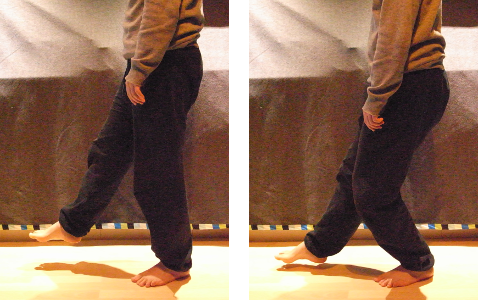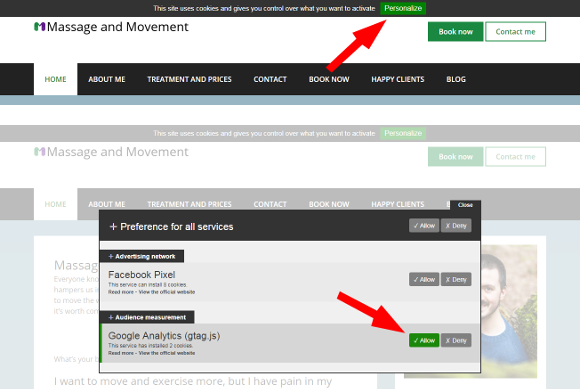As a therapist working with folks in various performative fields, and as a dancer and martial artist myself, I had to give a lot of thoughts about flexibility training. This is the result of some of my research and experimentation.
Know your enemy
First we have to understand what the various factors are, that can restrain fexibility. From where I am in my understanding of the human body, those can be of four types: restriction in the myofascia (shortness in the passive, structural tissue of the muscles), restrictions of the muscles by the central nervous system (contraction opposing the movement we want, thus restricting the range of motion), restrictions in the ligaments around the joint we’re trying to mobilise, and less-than-optimal alignment of the skeleton.
In this article I’ll present a common solution to the first three. For the last one, I encourage you to get educated about alignment, for instance with Lulu Sweigard’s Human Movement Potential or Eric Franklin’s Dyamic Alignment Through Imagery. For the best results, I recommend working on alignment, doing exercises along the lines I present here, and having regular treatments with a soft tissue therapist; “just” doing the exercises will take you a long way though, so keep reading!
And now the big reveal… work on the strength of the muscles opposing your movement, through the whole range of motion (especially eccentrically). What that means is that to work, say, on hip flexion with extended leg (straight kick, front splits, forward bend…), you’ll want to work on the strength of your hamstrings, especially at the end of your range of motion. More precisely you’ll want to put yourself in a position where gravity “pushes” you further into the movement you want to work on, use your muscles to resist that, and move from a completely comfortable position to a more challenging one, slowly and in a controlled fashion. Following Mosche Feldenkrais, I recommend about 25 slow, mindful repetitions. Here is an example for hamstrings.

Make sure your sit-bones swing back and up as you fold forward, and that your knees stays extended. Pay special attention to coming back up slowly, using your hamstrings only; think of the sit-bone coming down, taking the whole body with it.
Here is how it works:
On the physical restrictions
By doing slow motions requiring your potentially restricted muscles (here your hamstrings) to contract eccentrically (slowing down movement rather that creating it), and expecially at the end of the range of motion, you will create rather intense forces inside the muscles. This will signal the cells maintaining your fascia (the passive component of muscles) to be more active, both in “cleaning” the fibres that aren’t aligned in an ideal way, and in building more fibres, this time aligned in a way that is consistent with the load you put on them. Note that if you do that, you’ll need to follow these exercise sessions by regular stretching back to the point you were at the end of the session for about three days after each session (“regular” meaning a few times a day, ideally at least once soon after waking up, and once not too long before to bed).
If this is the main component in your lack of flexibility, improvements should be noticeable after the first session, possibly even during the first one. A moment of stretching should happen 4-12 hours after each session.
On the restrictions coming from the central nervous system
By doing these movements, you will create a self-image of movement where this movement is safe and acceptable, which will let your central nervous system know that it is okay to go that far, and probably also a bit further, thus preventing early contractions that would prevent you from reaching your full flexibility potential.
If this is the main component keeping you away from your objective, you’ll feel trembling as you do the exercises as your nervous system reorganises some of the neural pathways (roughly speaking).
On the ligaments
Doing these exercises will build strength and control around the joint, changing the load of the ligaments of the joint. That means that they will no longer need to do the muscles’ jobs in terms of stability, and that will change their fascial structure. This takes a lot of time though (weeks, months). In parallel, you will also be able to control the amount of load you put on your ligaments with the strength and control you’ve gained, allowing you to safely use gravity to load the ligaments in the direction you need them to allow you to move. A word of caution here: make sure you train mobility if all the directions the joint can move in roughly equally. Otherwise you’ll create points of imbalance in flexibility, leading to potential for injury. And by that I don’t mean “front and side splits”, I mean all the intermediate positions between those two, in a variety of positions of the torso.
If this is the main factor preventing you from moving further, you’ll feel intense heat in the joint you’re working on as you load it, that is when you use less muscular strength to hold the position.
And with that, I hope you reach new heights in flexibility, in a safe and painless way!
Continue reading: Superpower Your Mobility Training, Your First Step Towards Hip Flexibility, Imagery for Ankle Mobility, Self-Massage for the Feet.
Want more like this?
Check out the following blogs from massage therapists I know from around London:- On The Run Health and Fitness on running, nutrition and sports massage.
- The Soma Room on sports massage and exercise.




No Responses